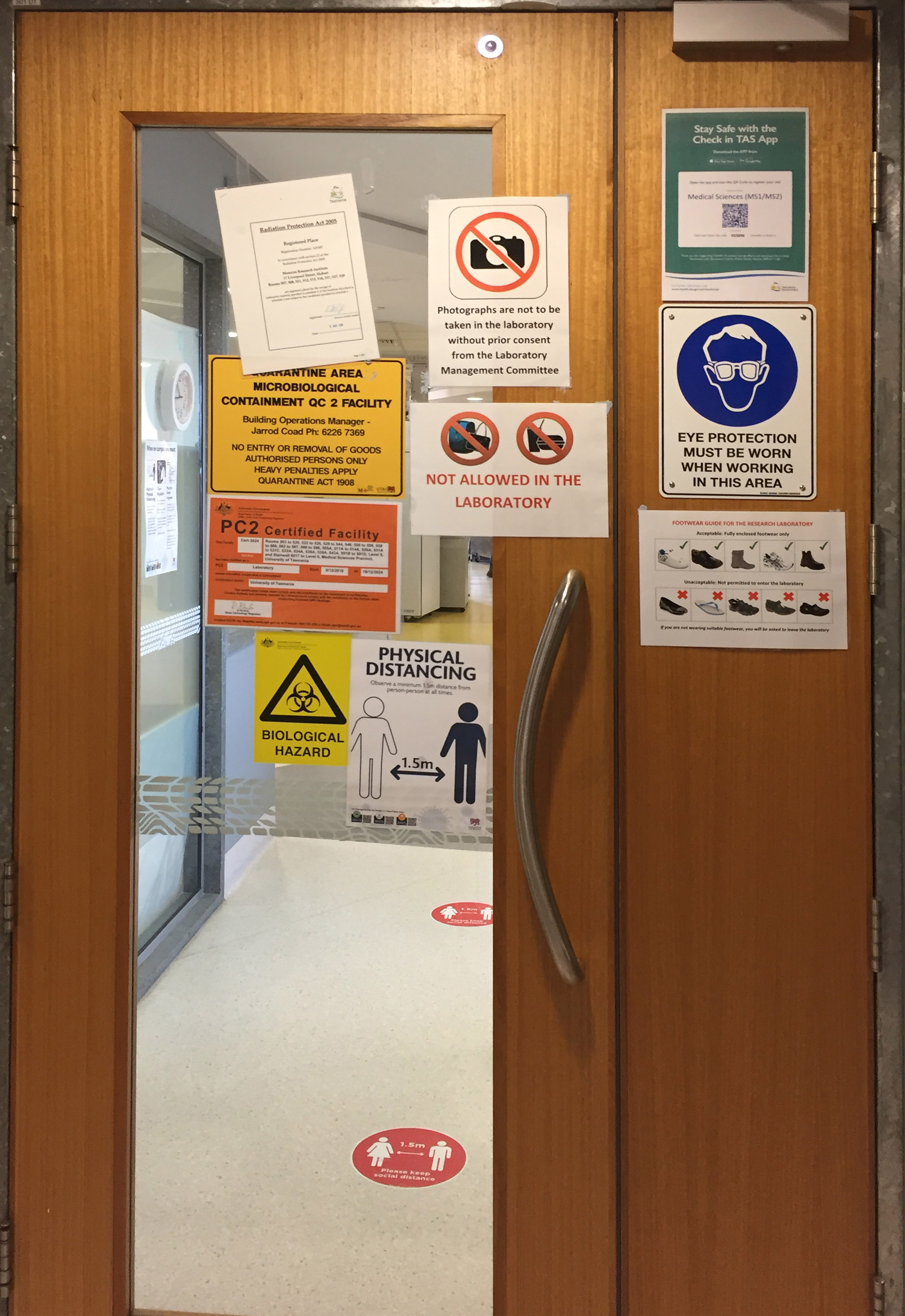Over the past few weeks I’ve been preparing for my exciting foray back into a lab environment. I am hopeful that it is ‘just like riding a bike’, although my finger dexterity for working one handed to open media bottles will likely need some renewed practice.
To date, I have completed my online training to ensure I am familiar with laboratory rules. At UTAS there are three levels Green (“general safety standards”), Amber (“higher level of risks and hazards associated with the space and activity”) and Red (“highly specialised inductions associated with an activity”). For access into a Physical Containment Level 2 (PC2) lab environment for cell culture, I am required to complete the inductions for all levels including Red Level Chemical and PC2 training. While I am still familiar with much of this information from my time at QUT, it is a good reminder of safety regulations. Even though it is a requirement, as an artist and scientific outsider, I feel it is even more important to set a strong example and adhere to all institutional guidelines and best-practice exemplars.
On Tuesday 29/6, I had my site induction with the lab technician Alex. Like many research labs, the work areas are like a maze and it will take me a bit of time to familiarise myself with the various locations for microscopy, bench work and cell culture. I am excited to be in the ‘Dirty’ Biobanking area where I will work with the rather excellent Dr Jo-Maree Courtney on culturing and hopefully immortalising my Tumour Baby (Fibroid) cells. Note that the term ‘dirty’ does not reflect my hygiene standards, but rather relates to the status of the cells as primary cells that have not undergone testing to ensure they are free from pathogens including potentially lab-borne infections such as mycoplasma.

As you can see from this photo of the PC2 entry, there are strict lab rules to ensure safety. Photography (without permission) is not permitted, although I have approval form the lab manager to document my work over the residency period. As a visual person, I find that documenting protocols via photos works well for me and helps facilitate memory.
As part of the residency, I am also challenging myself to use drawing as a mode of capturing my engagement. This approach was inspired by a recent drawing workshop ‘Drawing on the Brain’ I undertook with Dr Megan Walch at the Moonah Art Centre. She reminded me that drawing is really effective tool for memory and building neural pathways in relation to experience. I’ll have to see if I can maintain the process..


 Now that I am officially part of the Stroke Group (with Synapse collaborators A/Prof Brad Sutherland and Dr Jo-Maree Courtney), I attended my first Tuesday afternoon meeting. Brad was the presenting speaker who shared some of his research from a Postdoc undertaken at the University of Oxford some years ago. The talk focused on “Glutathione and its response following stroke”. While some of the discussion (particularly in relation to the Glutathione pathway) was beyond my knowledge, it was still useful to consider the discussion in terms of experimental design. It was also great to be reminded that sometimes outcomes are unexpected or unsatisfying, as they may contradict expectations.
Now that I am officially part of the Stroke Group (with Synapse collaborators A/Prof Brad Sutherland and Dr Jo-Maree Courtney), I attended my first Tuesday afternoon meeting. Brad was the presenting speaker who shared some of his research from a Postdoc undertaken at the University of Oxford some years ago. The talk focused on “Glutathione and its response following stroke”. While some of the discussion (particularly in relation to the Glutathione pathway) was beyond my knowledge, it was still useful to consider the discussion in terms of experimental design. It was also great to be reminded that sometimes outcomes are unexpected or unsatisfying, as they may contradict expectations.